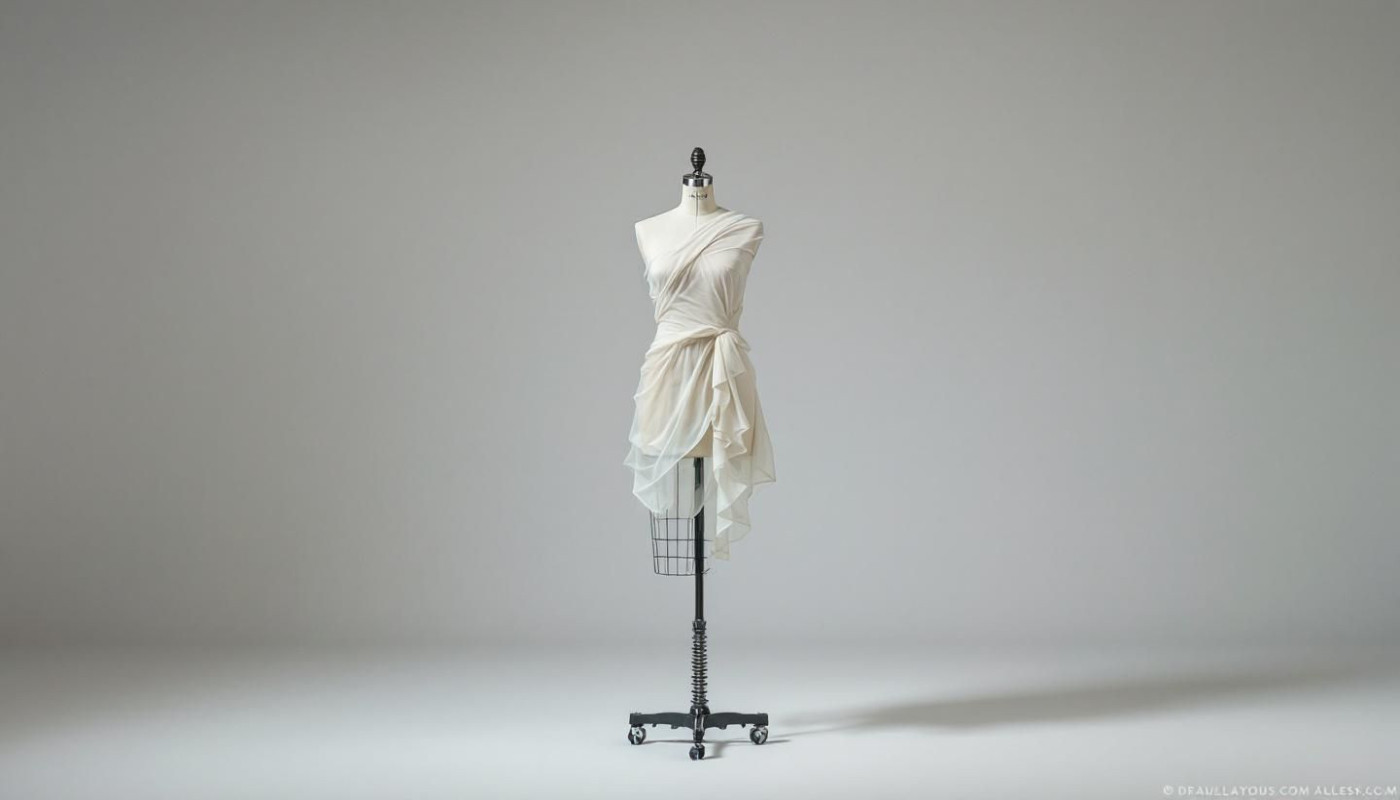Table of contents
Sheer dresses have woven their ethereal threads through the tapestry of modern fashion, capturing the imagination with their delicate interplay of exposure and concealment. These garments push the boundaries of design, challenging perceptions of elegance and sensuality in contemporary wardrobes. This exploration invites the reader to delve into the world of sheer dresses, revealing how they have become a statement of sophistication and bold femininity in the fashion landscape.
The Allure of Sheer Fabrics
The intrinsic appeal of sheer fabrics lies in their ability to impart a sense of ethereal beauty to any garment. These diaphanous materials are celebrated for their sheer fabric elegance, which can transform an ordinary dress into a masterpiece of design. When used thoughtfully, sheer fabrics create a delicate interplay between concealment and reveal, often becoming the focal point of a piece due to their light-reflective qualities. The translucent fashion trend has steadily gained momentum, captivating audiences with garments that appear to float on the body, defying the heaviness of traditional textiles.
Artistry is at the heart of utilizing sheer textiles; it requires a meticulous understanding of draping and layering to achieve the desired effect without compromising the garment's integrity. The expertise of designers in this realm is evidenced in their ability to use these fabrics to play with light and texture in fashion, creating unique effects that are both visually stunning and tactile. Sheer dress artistry is not merely about aesthetics but also about engineering - ensuring that the delicate nature of the fabric is preserved while it moves and interacts with the environment. The texture interplay in fashion that sheer materials offer is unparalleled, offering a canvas upon which designers can project their most imaginative concepts, resulting in truly innovative fashion statements.
Design Techniques for Sheer Dresses
In the realm of haute couture and mainstream fashion, the creation of sheer dresses demands a high level of ingenuity and expertise. Designers employ a range of techniques to craft these garments, ensuring they are both visually captivating and wearable. One such method is layering sheer textiles, a strategic approach that involves stacking different transparent materials to achieve a desired depth and complexity in the garment's appearance. The incorporation of embroidered sheer dresses is another popular design choice, which adds an element of sophistication and luxury through intricate patterns and details. Opaque and translucent design elements are often juxtaposed to create a dynamic interplay between what is revealed and what is concealed, a technique that can enhance the silhouette and add a touch of allure.
Strategic fabric placement is pivotal in executing designs that strike a balance between aesthetic and modesty. By carefully positioning opaque panels, designers ensure that the dress remains functional for various social settings while maintaining its ethereal charm. Appliqué is yet another technical term that denotes the delicate process of sewing or adhering decorations onto the sheer fabric to create unique motifs or textures, further enriching the garment's visual narrative. Through these methods, designers achieve an aesthetic functionality fashion that resonates with contemporary trends and personal expressions of style.
The Evolution of Sheer Dresses
The sartorial journey of sheer dresses is a fascinating study of "sheer dress evolution" through the ages. This garment has undulated through the annals of "historical fashion trends," evolving from the diaphanous drapery of ancient civilizations to the bold statement pieces that grace today's high-fashion runways. As societal norms have shifted, so too has the perception of "modesty in fashion," guiding the design and acceptance of sheer dresses within mainstream culture. The interplay between "cultural attitudes towards sheer" clothing and the fashion industry's response has keenly demonstrated the changing dynamics of what is considered acceptable or risqué in various eras. Meanwhile, the "body image fashion influence" has been equally pivotal, with sheer dresses often at the center of debates over body positivity and self-expression. To fully appreciate this evolution, insights from a fashion historian or a curator of a fashion museum would be invaluable, providing an academic perspective on how sheer dresses reflect broader changes within society.
Sheer Dresses in Different Settings
The versatility of sheer dresses is unparalleled, making them a mainstay in modern wardrobes capable of transitioning effortlessly from casual to formal sheer attire. Key to this adaptability is the art of styling sheer garments, where the selection of undergarments, layering pieces, and the overall ensemble work in harmony to either elevate or relax the dress's inherent sophistication. For a daytime event, pairing a sheer dress with a denim jacket and boots can create an air of laid-back chic; while for evening affairs, accessorizing translucent outfits with elegant jewelry and a tailored blazer can imbue the look with a sense of refined glamour. The transformative fashion pieces become canvases upon which accessories and layers dictate the formality and aesthetic of the final ensemble, underscoring the significant role of styling in the utility of sheer dresses across a multitude of settings.
Caring for Sheer Fabrics
Sheer dresses exude a delicate charm that requires meticulous attention to ensure they retain their diaphanous allure. Proper maintenance is key, with "caring for sheer dresses" being not just an act of cleaning, but one of garment conservation. When laundering these fine pieces, always opt for hand-washing with a gentle detergent, as this method is less abrasive than a machine cycle, thereby safeguarding the "maintaining delicate fabrics" aspect. If machine washing is unavoidable, use a mesh laundry bag to protect the fabric. The art of "washing sheer garments" involves cool water and a light touch, avoiding any harsh scrubbing that might damage the fabric. After cleansing, resist wringing out the dress; instead, press out the water gently or let the garment drip dry on a hanger, maintaining the integrity of the dress and preventing any shape distortion.
When it comes to drying, avoid direct sunlight which can fade colors and weaken fibers. "Storing translucent clothing" properly is as pivotal as the washing process. Keep sheer dresses in a cool, dry place, ideally laid flat in a drawer with acid-free tissue paper to avoid creases, or hang them on padded hangers to prevent stretching. Never store these garments in plastic bags as they can trap moisture, leading to damage. By adhering to these care guidelines, you promote "sheer fabric preservation," ensuring that the gossamer beauty of your garment endures through seasons of wear.

















